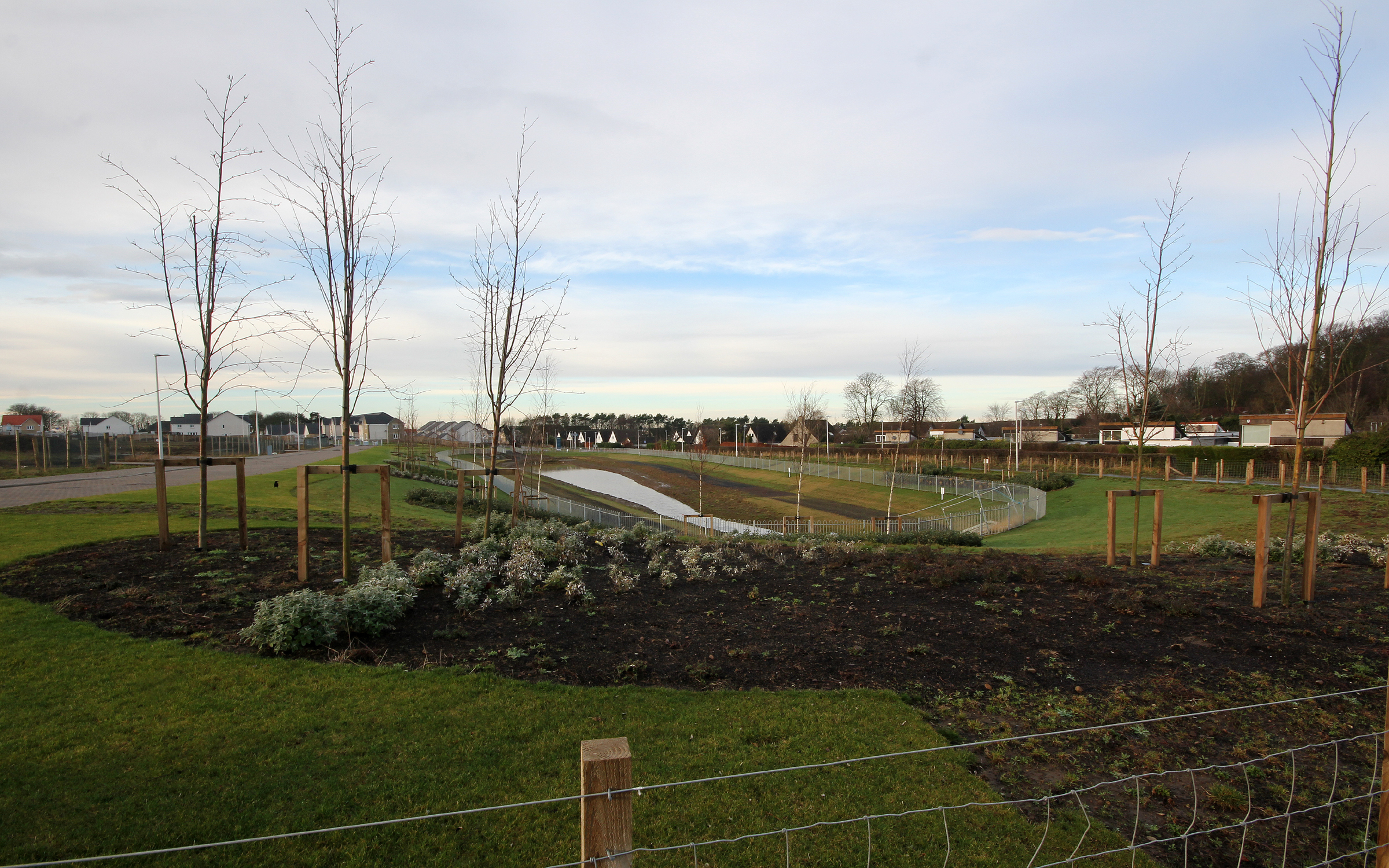The Importance of SuDS Ponds

Explore any new or modern housing estate, and you’re likely to find a pond or body of water somewhere within the site boundaries. In many cases, these ponds are presented as part of the estate-wide landscaping. Yet there’s a far more functional purpose to these bodies of water, over and above their status as wildlife havens and local beauty spots…
Pond life
The inclusion of ponds in modern housing estates has been compulsory since the snappily titled Water Environment (Controlled Activities) (Scotland) Regulations 2011 (as amended) came into force. It states that, with a few exceptions, every new residential development comprising more than one home needs to have a SuDS solution within its curtilage. SuDS is an acronym for Sustainable Drainage Systems – often little more than a depression in the ground which has the ability to retain water.
Ponds may already exist naturally, or they can be excavated out. They might hold water long before builders arrive on-site, or they could be flooded retrospectively, while a few are deliberately left dry. Their role is to give runoff surface water somewhere to go other than drains and sewers. These ponds might be adopted by the water authorities, though they could also fall under the governance of development factors and landscaping companies. They complement sewer systems in areas where land has either been built on or covered with non-porous materials which don’t allow water to soak into the ground.
Adhering to the regulations
The above description makes SuDS ponds sound simple, yet the reality is more nuanced. When Defra commissioned a manual on SuDS, it ran to over 960 pages. Described as a “compendium of good practice”, it delved into niche topics like sediment characterisation and peak runoff rate estimation. The latter refers to how much water might realistically arrive at a pond during a prolonged period of heavy rainfall, with calculations ensuring the pond has sufficient capacity to retain that amount of water until evaporation and absorption into the soil reduce its surface level.
Ultimately, a SuDS pond’s primary job is to absorb however much water the skies can throw at it, ensuring homes in the surrounding area are less likely to flood. The 2011 regulations were drafted up after major incidents like the 2002 Glasgow floods, when surface runoff became too much for the east end’s Victorian sewers to cope with. While ponds can’t always be retrofitted into older residential areas, their incorporation into new estates has been commonplace for over a decade. Ponds may also include pre-treatment steps like filters or vegetated channels, ensuring the water that eventually reaches treatment plants and reservoirs is cleaner.
Beauty and the beasts
As well as performing valuable flood-prevention duties, SuDS ponds provide a ready-made home for nature. You can expect to see fish, frogspawn, dragonflies and ducks over the course of a year, while the bacterial life can support ecosystems leading up to birds and bats. The reeds and rushes give residents a chance to encounter nature on their doorstep – literally, if frogs or hedgehogs start venturing beyond the pond’s immediate environs.
Homes near larger SuDS ponds tend to be sought after, since a view over water (especially from upper floors) is almost universally appealing. There are privacy benefits, too. Having a pond opposite your home means no neighbouring properties facing onto yours – and no prospect of anything being built there in future. Open outlooks increase the levels of natural daylight reaching your windows, while children will be fascinated to see swans, rabbits and other potential pond residents from their windows.
Back to Latest Posts




